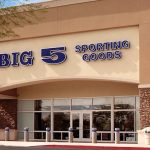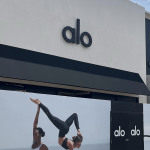The pace of acquisitions in the Outdoor, SnowSports, and Action Sports industries appeared to have eased after two years of heavy activity, but just when the tempo seemed to have peaked, a flurry of new deals came through that surpassed what many thought possible. The latest round is still underway, with prAna and Smartwool both involved in deals to be acquired and several other notable outdoor brands waiting in the wings to announce deals that just need the ink to dry.
While the deal pace slowed, the high valuations have been quite surprising. Its relatively common for private equity firms to pay high premiums for acquisitions, but now the industry is seeing strategic buyers up the ante and pay even more as well.
Several factors have converged over the past few years to create an environment where deals are occurring at a rapid rate and very high premiums are being paid for authentic outdoor brands showing decent sales growth. First, several large outdoor conglomerates, like K2, Amer Sports, Quiksilver, and VF Corp., have been buying a myriad of brands, both large and small, and consolidating them under their respective umbrellas. This was spurred partially by major advances in communication and information systems in the past five years, making integration much easier and faster. Add to this the fact that other apparel and footwear industries have finally noticed the Outdoor Sports industries. And private equity fund raising has reached record level in the past year, putting an enormous amount of capital into a market that shows growth and brand-building potential.
Many non-outdoor conglomerates, like Liz Claiborne, SBI, and Perry Ellis, are looking at the outdoor and action sports industries as potential growth sectors in a very challenging apparel market. Also, while no major international deals involving U.S. brands have been completed yet, there has also been interest from foreign investors in U.S. brands for two primary reasons to establish a U.S. presence and to export the brand internationally. Finally, the scarcity of truly authentic outdoor brands that are willing to sell is driving prices even higher. Deals and valuations have been ramping up for the past year, and the environment has become so expensive that the “mega-consolidators” have been forced to curb their appetite.
K2 has not completed an acquisition in over a year and VF Corp. has slowed down considerably since it acquired Reef in April. Until recently, the rule of thumb in the outdoor industry was that a companys valuation is about equal to its annual sales, or on the high end at 1.2X sales. The inflation really began with Nautilus and their deal to acquire Pearl Izumi for $74.3 million when P.I. reported $57.1 million in trailing twelve month sales. Following on this deal was Timbuk2s acquisition by a private equity firm for $20 million when the company reported $15 million in 2004 sales. More recently, prAna was acquired by Liz Claiborne for 1.8X sales before Timberland acquired Smartwool for nearly 2X sales.
Perhaps the best example of an astronomical valuation is Crocs proposed Initial Public Offering. Many in the industry believe this is a gambit to spark interest from private equity firms, but the details of the SEC filing still raise some eyebrows. The company has realized some meteoric top-line growth over the past year and continues to show very strong numbers. However, Crocs reported roughly $13 million in sales in 2004. According to the SEC filing, the company is hoping for a valuation in the $600 million range. While the success or failure of this IPO will not change the dynamics to the deal-making environment, it could send warning signals to investors saying the outdoor market is over-valued.
Many firms that work behind the scenes to make these deals happen feel that these factors are not simply working together to create higher selling prices, but could be creating an artificially inflated bubble. However, the investment community and strategic buyers are not blindly throwing money at the Outdoor Industry.
There are several major demographic shifts on the horizon that could spur future growth and profitability, and many companies want to be well-positioned to capitalize on these potential trends. With the baby boomers retiring and suddenly having more leisure time, the health, fitness, and outdoor industries will have a much larger pool of potential participants. In addition, the outdoor industry has a proven track record of building interesting brands that appeal to a much broader market than many traditional sports.
While some recent deals may be overvalued, if there is a bubble, it is not likely to pop without some external force. Robin Smith, a principal at Specialty Ventures, LLC, a financial advisory firm that is very active in the outdoor industry, told BOSS that the outdoor and action sports industries will continue to be brand builders and present a growth opportunity to investors.
“There is still considerable opportunity for U.S. outdoor brands internationally and these brands have a cache that other sports brands dont seem to have,” he said. “I think this environment will continue unless one of two events occurs. First, if theres a macro hiccup, like the avian flu or another terrorist attack we could see a drastic devaluation. Second, if one of the larger strategic consolidators, like K2 or Amer Sports, gets into financial trouble we could see them sell off several brands, causing a deflationary environment.”
Most other investment bankers and financial consultants agree with this assessment. Nathan Pund, a partner in Silver Steep Partners, which is a financial advisory firm that specializes in Outdoor Lifestyle and Action Sports brands, feels like this environment will last. However, he warns that once deflation starts, companies who are looking to sell would be better off waiting for the next inflationary cycle to start again.
“These multiples will likely last through the first half of 2006 and maybe longer. Its not like theres a bubble that will pop tomorrow, but we are watching different external factors closely,” he said. “I am telling all of our clients, that if youre thinking about it, youre better off starting the process now. Otherwise, well be waiting for five years for the bus to come around again.”















